By Dan Weisz
Monday morning around 3 AM we finally had the first good summer rain in my neighborhood, lightning and thunder and all. It rained about a half of an inch. In the morning, it was overcast and cool when I ventured out.
A Costa’s Hummingbird perched near me while I was watering the potted plants on the front porch. Right now Costa’s are the only type of hummingbird visiting my feeders. I’m not sure whether or not this is the same fellow I photographed a few weeks ago but it sure seemed comfortable around me.
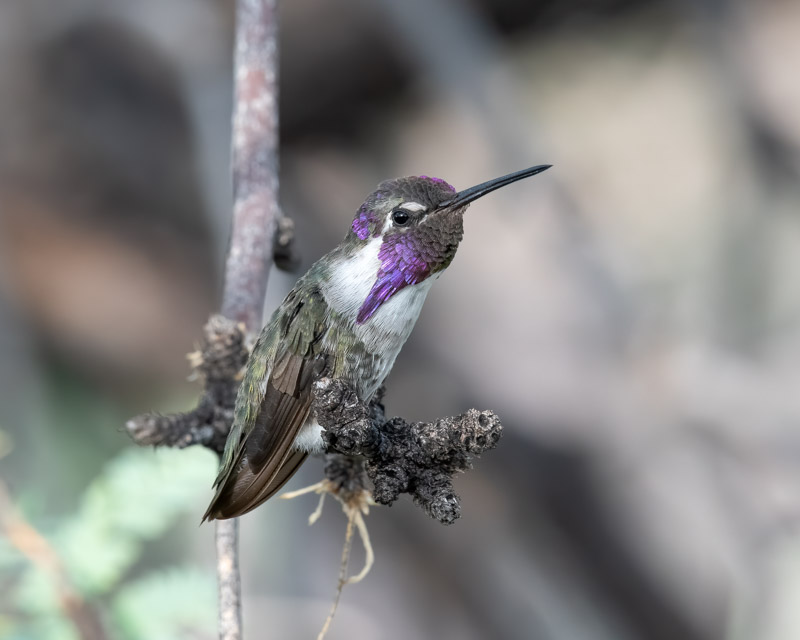
When he slightly turned, his gorget flared in the light. A Costa’s Hummingbird is just over three inches long but only weighs a bit more than a penny!! Put a penny in your hand while you look at this picture to get a sense of the wonder of what you are looking at.
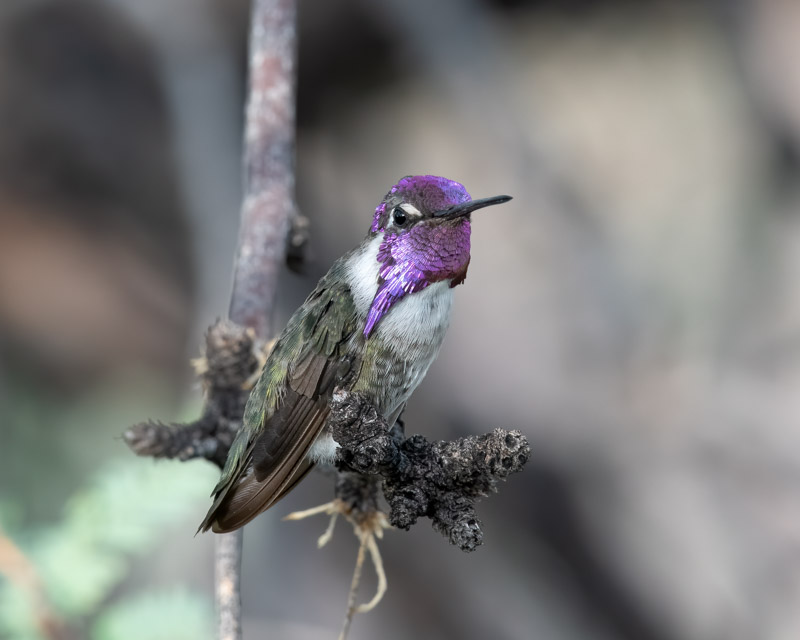
Watering plants helps me slow down and calmly observe the world. I saw this Robber Fly land on a plant. Also known as “Assassin Fly”, this fly was probably perched while scanning the area with those huge compound eyes for possible prey. When it captures prey, it uses that pronounced proboscis to punch through the the skin/exoskeleton of whatever it captures. It injects venom into its victim’s body and once the venom breaks down the internal parts of the victim into fluid, the Robber Fly then drinks its meal at its leisure!!
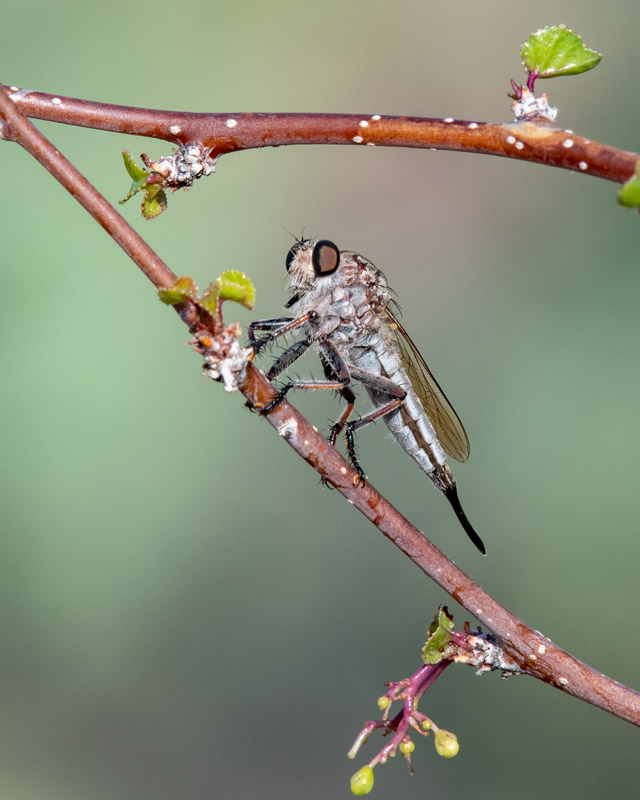
It was overcast and cool, or cooler than the previous day’s 108 degrees so I headed to Sweetwater Wetlands for a brief walk. It actually sprinkled on me and, with the temperature in the low 90’s was it comparatively comfortable. I found an American Coot with its chick. As boring as an adult coot is with its black/gray coloring, the chick is an explosion of color- not what most other baby birds look like.
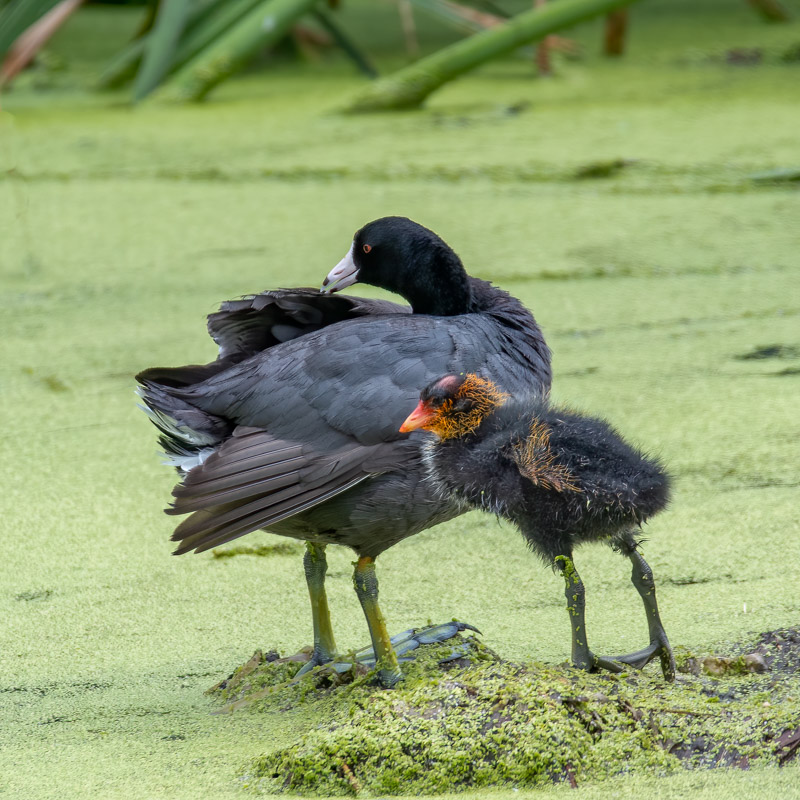
Colored for Halloween, this orange and black chick looks almost comical. That bald spot and the orange fuzz really stand out. Turns out there is a scientific reason for this. Basically, the younger the chick is, the more orange it has. The color indicates weakness and vulnerability, so the parent provides more food for the youngest of its chicks. To read a recent fascinating study about this, here is a December article in the Atlantic: https://www.theatlantic.com/science/archive/2019/12/coot-chicks-feathers-fancy/604234/
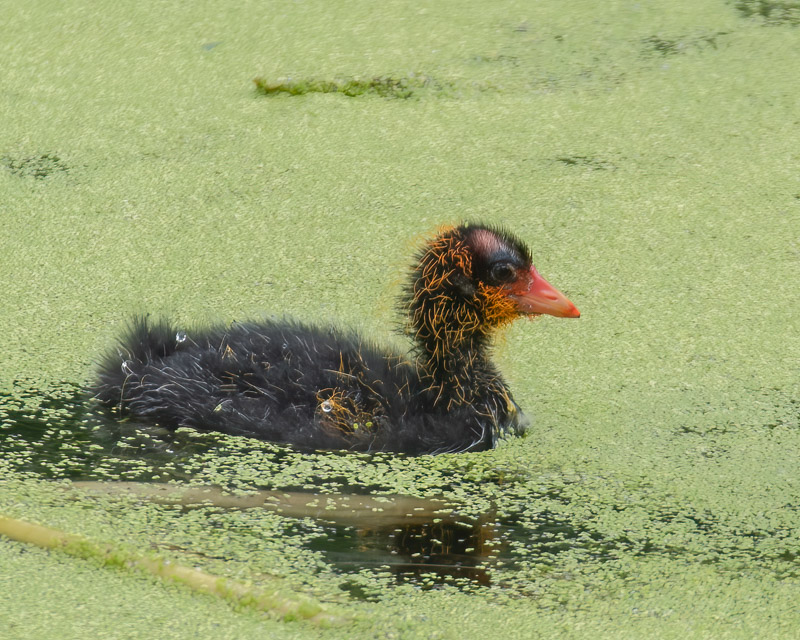
It is summer so there were dragonflies all around the wetlands. In Tucson’s summers, if you have water, you have dragonflies. This was the most common dragonfly of the day, a Blue Dasher. The males have a chalky blue color on their abdomen with a black tip and eyes that look metallic in certain lighting

The male Blue Dasher has blue/green eyes with a black between them and a white face. Dragonflies hold their four wings perpendicular to their body while at rest.
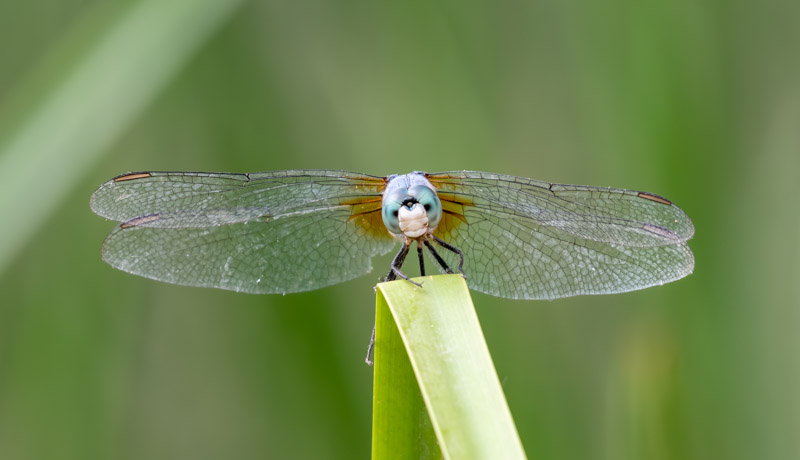
This female Mallard Duck seemed to asking me to take her photo. She’s a plain duck but still has interesting feather patterns in this, its non-breeding, season.

A Common Gallinule was swimming in the duckweed. The species was formerly called the Common Moorhen and has that distinctive bold red shield over its bill which appears every breeding season. As it swam, it would dip its bill into the duckweed, a tasty treat that occurs on the surface of still-moving ponds and lakes. Duckweeds are the smallest flowering plant known and a great food source. Each individual plant consists of a single flat oval leaf no more than 1/4 of an inch long that floats on the surface of still-moving ponds and lakes.
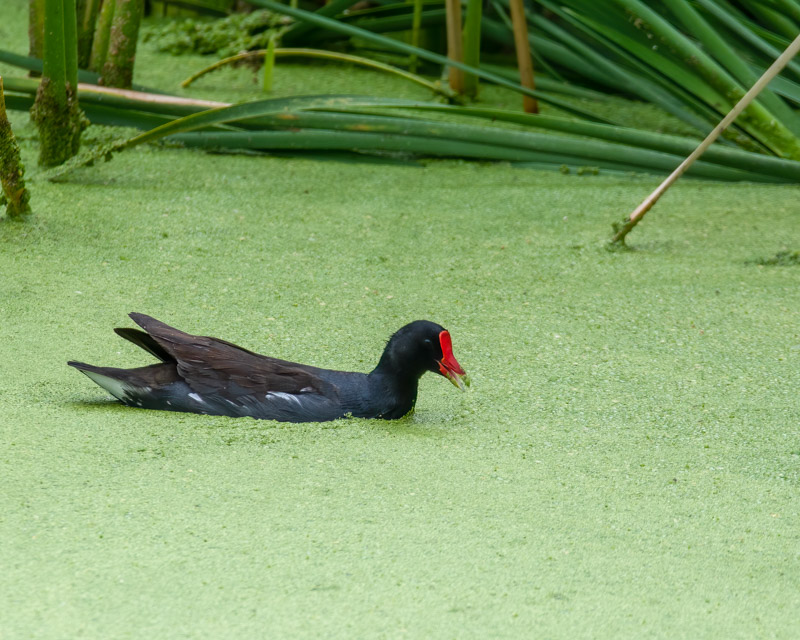
This is probably a female Blue Dasher dragonfly. I say probably because juvenile males look very similar to adult females. The female’s abdomen is black with yellow stripes but she still has the same color of eyes and face as the male.
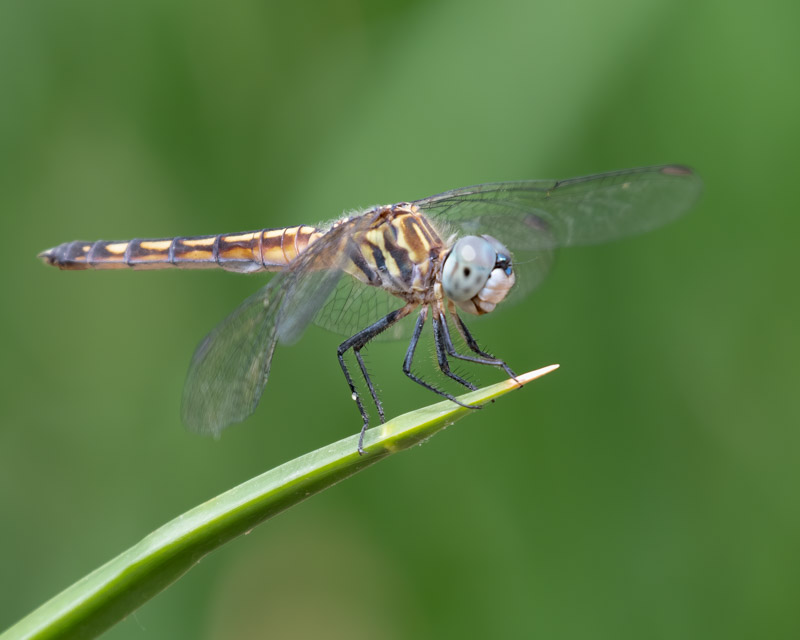
All in all a refreshing morning on a humid summer day.
